There are 8 pages in my book devoted to this, one of my all time favourite perennial vegetables, Hablitzia tamnoides. I prefer just to call it Hablitzia or Habby as my friend Telsing calls it fondly, but sometimes it is known as the Caucasian spinach revealing its home territory. I’m particularly in awe of its hardiness as shoots appear in autumn and are usually undamaged after being exposed to up to 3 months of freezing temperatures. Even if the shoots were killed off, there are numerous shoots waiting at the ready to sprout from the roots! Even on the 31st December, the snow having disappeared for some days, I could now harvest a few shoots for a winter salad! I did this last Xmas which was very mild – the reddish shoots at the bottom in the 50 species salad picture are Hablitzia. The pictures of my oldest Hablitzia root mound below were taken today, 31st December 2014….
I also noticed like last year that several seeds have already sprouted around the plant, eager to get started with spring. Last year they all died in our winter drought…. I’ll leave them and see if they make it… :)
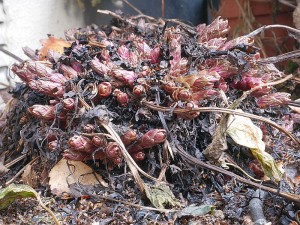
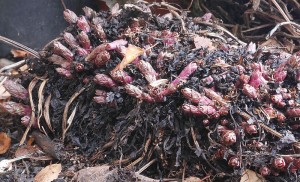


Oca (Oxalis tuberosa) is a short day plant from the Andes which produces next to nothing outside here as the plants are usually killed by the first hard frosts in early October…..
In order to lengthen the season, I grow my Ocas in large pots, which I usually bring in to the porch on the first frosts…
This year I was a bit late and most of the foliage was killed before I could bring the plants inside and only the odd stem remained green until harvest. I hadn’t therefore expected much yield. However, some of the varieties were as good as normal….
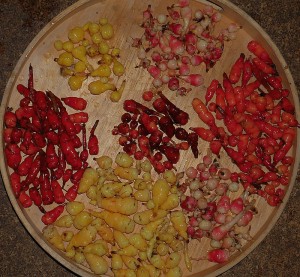
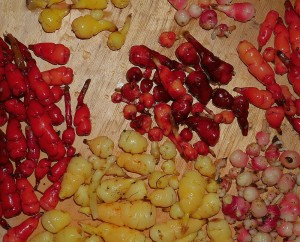
Ocas in pots in the garden:
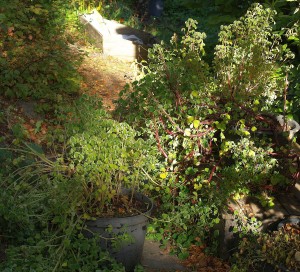
In the porch (not this year):
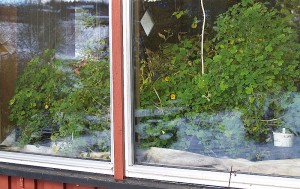
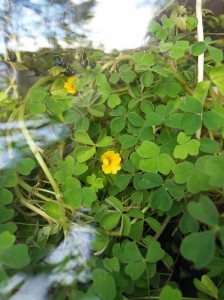

Most of the snow disappeared in the garden after rain and high temperatures over the last 24 hours…revealing this old man’s beard in seed. I’ve grown Clematis vitalba as a spring edible (cooked young shoots) for a number of years, but after a long mild summer and autumn this is the first time the seed has matured and the beard has emerged…this is a good one for the Forest Garden, but remember that it needs to be cooked as poisonous raw like most members of the Buttercup family, Ranunculaceae…
Clematis vitalba is an important wild foraged edible particularly in Italy!
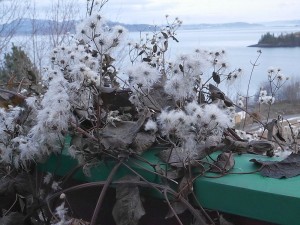
Perennial vegetables, Edimentals (plants that are edible and ornamental) and other goings on in The Edible Garden











